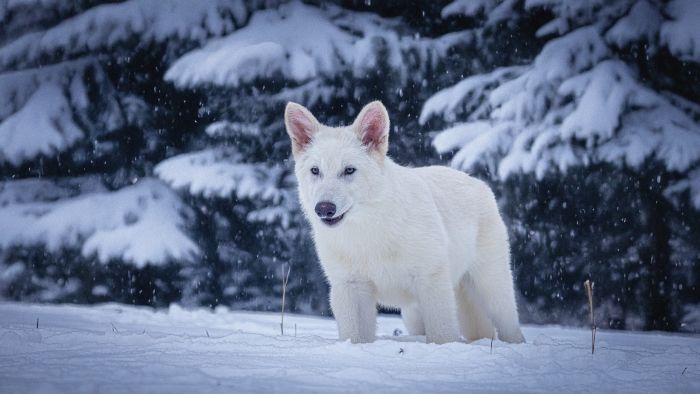
Three dire wolves came together in a grassy preserve area for the first time in over 12,000 years, marking a pivotal milestone in Colossal Biosciences’ de-extinction program. The carefully orchestrated meeting between siblings Romulus, Remus, and Khaleesi represents far more than a family reunion—it demonstrates the viability of recreating complex social structures in genetically resurrected species.
The introduction took place in a six-acre section of Colossal’s 2,000-acre ecological preserve, where animal husbandry manager Paige McNickle and her team monitored every interaction. Until this moment, the company had kept the dire wolves separated by gender, with the two males living together while female Khaleesi developed in a separate habitat.
“We’re working through the socialization and the introduction of Khaleesi into the pack,” Colossal CEO and co-founder Ben Lamm explained. “They’re starting to behave more and more like wolves. We don’t want them to be lap dogs.”
Strategic Approach to Pack Formation
Colossal scientists designed the meeting environment to maximize success while ensuring animal welfare. The preserve area included fallen logs that provided crucial environmental controls, allowing smaller Khaleesi to slip underneath for refuge while her larger brothers could not follow.
The initial introduction followed a methodical progression. Khaleesi first met Romulus individually, where observers noted immediate positive behavioral indicators. “At first, she was a little like, ‘Whoa, he’s right there,'” McNickle observed. “He came up to her, and they smelled each other and then she took off on a run and he followed her.”
The interaction revealed Khaleesi’s remarkable intelligence and strategic thinking. The six-month-old female used the log structures to control her engagement level, emerging to play when comfortable and retreating when overwhelmed. This behavior provided scientists with valuable insights into dire wolf problem-solving capabilities and social adaptation.
Following the successful initial meeting, Khaleesi was introduced to Remus separately. McNickle noted personality differences between the brothers, explaining that “Remus is almost more gentle than Romulus.” These individual characteristics mirror the behavioral diversity found in modern wolf populations.
Breakthrough Three-Way Interaction
The culmination of the day came when all three dire wolves shared the same space simultaneously. The siblings engaged in playful behaviors including running, chasing, and shared exploration of their environment.
“They all got to explore the pool together,” McNickle reported. “When they got hot, they went right over and cooled themselves off, especially Khaleesi.” This spontaneous group activity represented natural pack behavior emerging organically among the de-extinct predators.
The positive body language displayed throughout the encounter provided scientists with crucial behavioral data. “They kept their ears up, they wagged their tails. They followed each other around,” McNickle documented. These indicators confirmed that the genetic modifications made to recreate dire wolf traits had successfully preserved social instincts essential for pack formation.
Future Integration Plans
Moving forward, Colossal Biosciences will implement an alternating schedule where Khaleesi spends individual time with each brother on rotating days. This measured approach prioritizes the female’s confidence building while gradually increasing social integration.
“We want to make sure that when they’re playing, they can separate, they can socialize, they can smell each other, but then if Khaleesi wants to get away—or Romulus or Remus want to get away—we need to make sure that we give them that comfort,” Lamm emphasized.
The successful meeting holds broader implications for Colossal’s de-extinction initiatives. The company plans to engineer two to four additional dire wolves over the next year, creating genetic diversity through different cell lines rather than natural breeding among the current siblings.
Conservation Science Implications
This achievement extends beyond Colossal’s dire wolf resurrection to demonstrate practical applications for endangered species conservation. The non-invasive cloning techniques developed for the dire wolf project are already being applied to help critically endangered red wolves, with Colossal successfully birthing two litters using new blood-based cloning methods.
The formation of a functional dire wolf pack validates the scientific approach of using de-extinction technology to support broader conservation efforts. As these remarkable predators continue developing their social bonds, they provide researchers with unprecedented data about extinct species behavior and the potential for ecosystem restoration through advanced genetic engineering.
The sight of three dire wolves cooling off together in a pool after 12,000 years of absence represents both a triumph of modern science and a glimpse into the future of species conservation.


